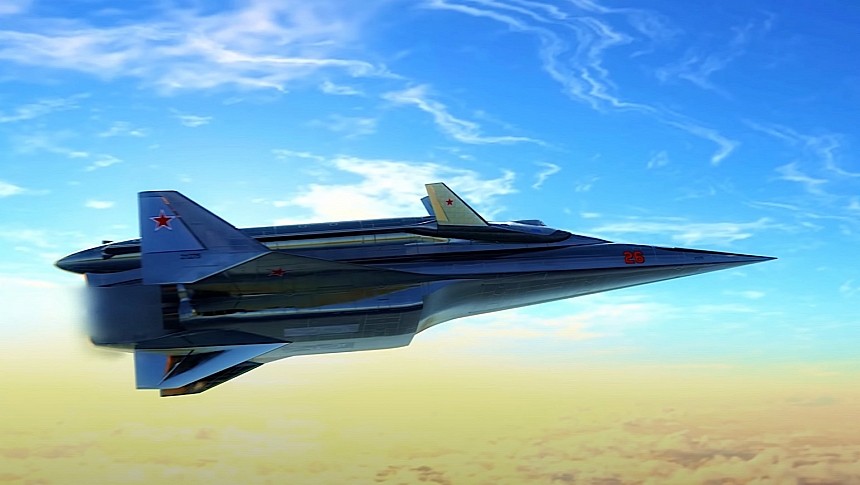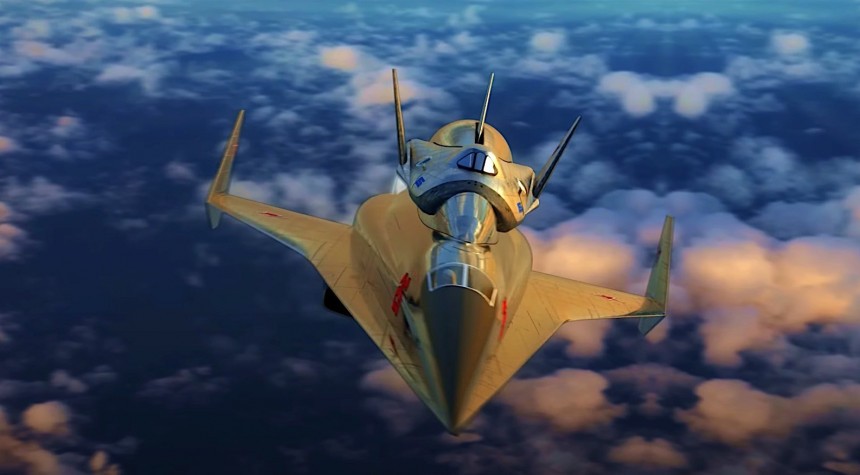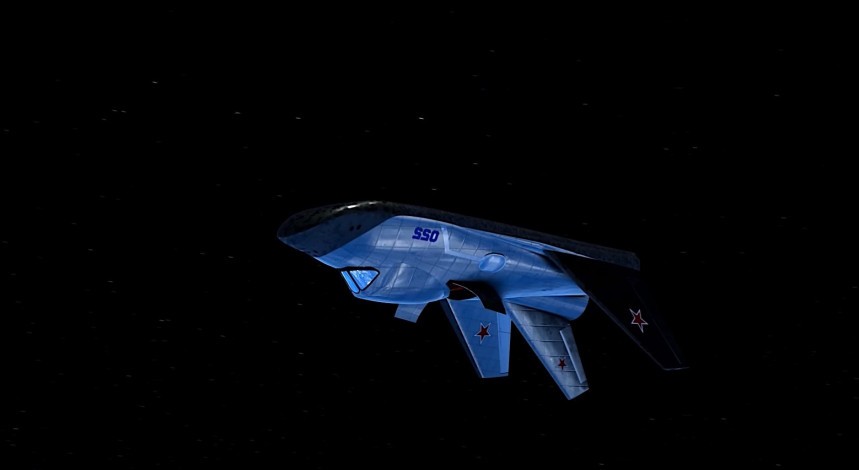When the space race started back in the mid-1950s, people were imagining we would soon not only colonize other worlds but also begin fighting for resources beyond the confines of our own planet. Yet one of the main competitors in this race dropped out, and that left us to the reality of our time.
Always considered as the runner-up in the technological and arms race against the U.S., the Soviet Union took everyone by surprise when it launched Sputnik I in 1957. It was nothing more than a glorified beach ball made of aluminum with four whip-like antennas attached to it, but it was enough to ignite one of the most intense periods of innovation in human history.
After Sputnik, the USSR seemed to have committed heavily to going up to space. It once again blew everybody's mind when it launched the first human into space, Yuri Gagarin, in 1961.
It was only then when America really seems to have taken note, and announced it was targeting not a low-Earth orbit, but the Moon. And that appeares to have sent the Russians into a spin they're yet to recover from.
Sure, Russia still is one of the pillars of our species' space exploration efforts, but apart from a contribution to the International Space Station, and the development of a very successful class of rockets and spacecraft called Soyuz, the world didn't get much else.
That doesn't mean there weren't some great ideas being studied over the years there. One of them is called the MiG-105, and it was no more no less than a spaceplane that could have made Russia a major player in space exploration today and, who knows, might have even taken the lead from America.
The MiG-105 came at a time when everyone who was anyone in space exploration was looking at reusability, in the 1960. On the American front, the research performed in this field would lead in the 1970s to the creation of the Space Shuttle. On the Russian one, it amounted to absolutely nothing.
The spacecraft was the design of one of the biggest players in the world's aerospace industry, Mikoyan. It was part of a Russian space program called Spiral, and work on it was conducted for more than a decade, from 1960 to 1976.
As you all know, the American space shuttle launched vertically, shooting more or less straight-up attached to boosters. The Russian idea however was more user-friendly: the spacecraft launched attached to a carrier booster that took off vertically from the back of a carrier platform.
The carrier platform was nothing more than a hypersonic jet that would specifically be built for the task. This jet was supposed to be based on the Tupolev 144 and the Sukhoi T-4.
It would take off in a conventional fashion from a runway and carry the MiG-105 on its back, together with a liquid fuel booster. Once a set altitude was reached, the spacecraft would separate, ignite its booster, and head for the stars.
It would have gone about its business in space, and then it would have come down, just like the Space Shuttle, to land on a runway. It wasn't imagined with wheels, but with skids instead. The MiG would have only carried its pilot, and would have been reusable.
The spacecraft itself was to be a delta-wing, with the wings folded upward at 60 degrees (we see something similar on today's spaceships operated by Virgin Galactic). Design-wise, it has a pretty weird shape, with a lifted nose (the whole thing was designed to wrap around its booster), a protruding cockpit, and a lowered, some would say even cavernous middle.
That makes it look like a shoe, and that's why it was nicknamed by the people who got to know it firsthand the Lapot, which in Russia is a sort of bast shoe.
Unlike many other spacecraft we occasionally discuss here, the MiG-105 came pretty close to becoming a reality. Although its carrier plane never made it into existence, the spacecraft did go pretty far in its development process.
It was however killed in the mid-1970s because of the usual killer of such projects, money (or better yet, lack of). It did go on to inspire the Buran, that Russian spaceplane that was weirdly similar to the American space shuttle.
Even if the MiG-105 never got to fly in the real world, computers can and did bring it to life, giving us yet another taste of what would have been. Animation specialist Hazegrayart put together a five-minute CGI video of the plane in action, and you can enjoy it all below this text.
As usual, it's a perfect trip into a world that never came to be, one where Russia still mattered a lot in research and development. A world that would have probably looked a lot different than the one we're living in.
After Sputnik, the USSR seemed to have committed heavily to going up to space. It once again blew everybody's mind when it launched the first human into space, Yuri Gagarin, in 1961.
It was only then when America really seems to have taken note, and announced it was targeting not a low-Earth orbit, but the Moon. And that appeares to have sent the Russians into a spin they're yet to recover from.
Sure, Russia still is one of the pillars of our species' space exploration efforts, but apart from a contribution to the International Space Station, and the development of a very successful class of rockets and spacecraft called Soyuz, the world didn't get much else.
That doesn't mean there weren't some great ideas being studied over the years there. One of them is called the MiG-105, and it was no more no less than a spaceplane that could have made Russia a major player in space exploration today and, who knows, might have even taken the lead from America.
The MiG-105 came at a time when everyone who was anyone in space exploration was looking at reusability, in the 1960. On the American front, the research performed in this field would lead in the 1970s to the creation of the Space Shuttle. On the Russian one, it amounted to absolutely nothing.
As you all know, the American space shuttle launched vertically, shooting more or less straight-up attached to boosters. The Russian idea however was more user-friendly: the spacecraft launched attached to a carrier booster that took off vertically from the back of a carrier platform.
The carrier platform was nothing more than a hypersonic jet that would specifically be built for the task. This jet was supposed to be based on the Tupolev 144 and the Sukhoi T-4.
It would take off in a conventional fashion from a runway and carry the MiG-105 on its back, together with a liquid fuel booster. Once a set altitude was reached, the spacecraft would separate, ignite its booster, and head for the stars.
It would have gone about its business in space, and then it would have come down, just like the Space Shuttle, to land on a runway. It wasn't imagined with wheels, but with skids instead. The MiG would have only carried its pilot, and would have been reusable.
The spacecraft itself was to be a delta-wing, with the wings folded upward at 60 degrees (we see something similar on today's spaceships operated by Virgin Galactic). Design-wise, it has a pretty weird shape, with a lifted nose (the whole thing was designed to wrap around its booster), a protruding cockpit, and a lowered, some would say even cavernous middle.
Unlike many other spacecraft we occasionally discuss here, the MiG-105 came pretty close to becoming a reality. Although its carrier plane never made it into existence, the spacecraft did go pretty far in its development process.
It was however killed in the mid-1970s because of the usual killer of such projects, money (or better yet, lack of). It did go on to inspire the Buran, that Russian spaceplane that was weirdly similar to the American space shuttle.
Even if the MiG-105 never got to fly in the real world, computers can and did bring it to life, giving us yet another taste of what would have been. Animation specialist Hazegrayart put together a five-minute CGI video of the plane in action, and you can enjoy it all below this text.
As usual, it's a perfect trip into a world that never came to be, one where Russia still mattered a lot in research and development. A world that would have probably looked a lot different than the one we're living in.
















